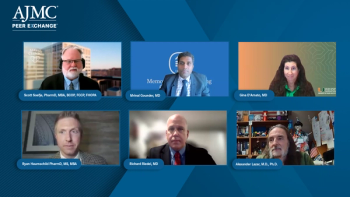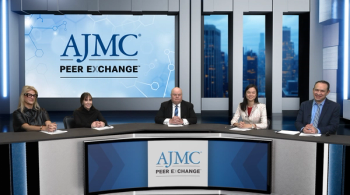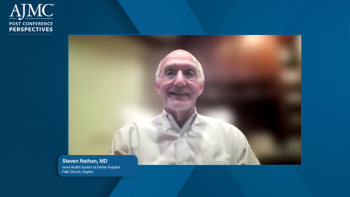
Interventions for AML After Relapse Work Best in Patients Who Achieved CR
Treatment options for patients with acute myeloid leukemia (AML) who relapse after an allogeneic hematopoietic cell transplant (allo-HCT) are limited, but those who are able to receive intensive interventions receive a second allo-HCT or donor lymphocyte infusion. A study in JAMA Oncology sought to compare the 2 options for patients who relapse.
Treatment options for patients with acute myeloid leukemia who relapse after an allogeneic hematopoietic cell transplant (allo-HCT) are limited, but those who are able to receive intensive interventions receive a second allo-HCT (allo-HCT2) or donor lymphocyte infusion (DLI). A
The retrospective observational study included 418 patients who were reported to the Acute Leukemia Working Part of the EBMT, a voluntary working group of more than 500 transplant centers.
Relapse occurs in 25% to 30% of patients who receive allo-HCT, and “outcomes are largely dependent on remission status at the time of allografting,” the authors explained.
A total of 137 patients received allo-HCT2 and 281 patients received DLI. The patients who underwent allo-HCT2 had a higher incidence of remission at the time of intervention and relapse occurred at a later time compared with allo-HCT1.
Compared with the DLI group, a higher proportion of allo-HCT2 patients were in complete remission (CR) at the time of intervention and remained in CR after (38.7% of allo-HCT2 vs 18.1% of DLI). In addition, 38.7% of allo-HCT2 patients who were not in CR at the time of intervention achieved CR after treatment compared with just 24.2% of the DLI group.
While the researchers did not find any significant difference in overall survival (OS) between the allo-HCT2 and DLI groups, they did note that OS was significantly better when either procedure was offered in CR.
Among all patients who died, relapse was the cause for 55.7% of patients in the allo-HCT2 group and for 75.8% of the DLI group. Patients who underwent DLI had significantly higher relapse-related deaths at 2 years (59% vs 40%) and at 5 years (66% vs 46%) after transplantation.
Overall, the researchers were not able to recommend one intervention over the other due to the heterogeneity of patients and disease- and treatment-related characteristics.
“Best results seem to be achieved in patients who relapse after 6 months from an allo-HCT1 or those who attain CR prior to an allo-HCT2 or DLI,” the authors concluded. “In patients who relapse within less than 6 months or receive an intervention while having active disease, OS rates are low.”
Reference
Kharfan-Dabaja MA, Labopin M, Polge E, et al. Association of second allogeneic hematopoietic cell transplant vs donor lymphocyte infusion with overall survival in patients with acute myeloid leukemia relapse [published online July 12, 2018]. JAMA Oncol. doi: 10.1001/jamaoncol.2018.2091.
Newsletter
Stay ahead of policy, cost, and value—subscribe to AJMC for expert insights at the intersection of clinical care and health economics.






































